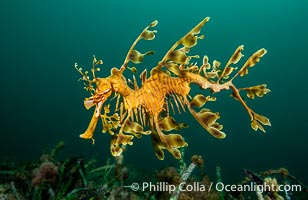
The leafy seadragon (Phycodurus eques) is found on the southern and western coasts of Australia. Its extravagent appendages serve only for camoflage, since it has a nearly-invisible dorsal fin that propels it slowly through the water. The leafy sea dragon is the marine emblem of South Australia.
Species: Leafy seadragon, Phycodurus eques
Location: Rapid Bay Jetty, South Australia
Image ID: 39137
Species: Leafy seadragon, Phycodurus eques
Location: Rapid Bay Jetty, South Australia
Image ID: 39137
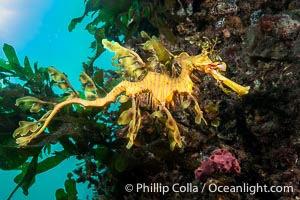
The leafy seadragon (Phycodurus eques) is found on the southern and western coasts of Australia. Its extravagent appendages serve only for camoflage, since it has a nearly-invisible dorsal fin that propels it slowly through the water. The leafy sea dragon is the marine emblem of South Australia.
Species: Leafy seadragon, Phycodurus eques
Location: Rapid Bay Jetty, South Australia
Image ID: 39134
Species: Leafy seadragon, Phycodurus eques
Location: Rapid Bay Jetty, South Australia
Image ID: 39134
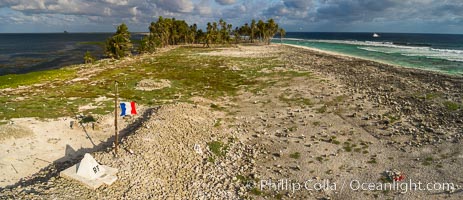
The French tricolor flag flies over Clipperton Island at sunset. Clipperton Island, a minor territory of France also known as Ile de la Passion, is a spectacular coral atoll in the eastern Pacific. By permit HC / 1485 / CAB (France).
Location: Clipperton Island, France
Image ID: 32902
Location: Clipperton Island, France
Image ID: 32902

American Flag Flying Over The Wreck of the HMCS Yukon in San Diego. Deliberately sunk in 2000 as part of San Diego's Wreck Alley to form an artifical reef, the HMCS Yukon is a 366-foot-long former Canadian destroyer. It is encrusted with a variety of invertebrate life, including Cornyactis anemones which provide much of the color seen here.
Location: San Diego, California
Image ID: 39476
Location: San Diego, California
Image ID: 39476
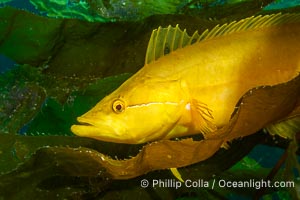
Giant kelpfish in underwater kelp forest, Catalina Island.
Species: Giant kelpfish, Heterostichus rostratus
Location: Catalina Island, California
Image ID: 40523
Species: Giant kelpfish, Heterostichus rostratus
Location: Catalina Island, California
Image ID: 40523
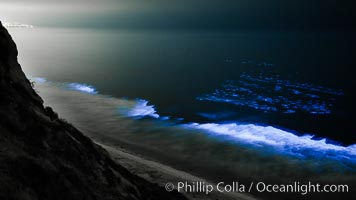
Bottlenose dolphins swim through red tide, hunt a school of fish, lit by glowing bioluminescence caused by microscopic Lingulodinium polyedrum dinoflagellate organisms which glow blue when agitated at night.
Species: Lingulodinium polyedrum
Location: La Jolla, California
Image ID: 27066
Species: Lingulodinium polyedrum
Location: La Jolla, California
Image ID: 27066
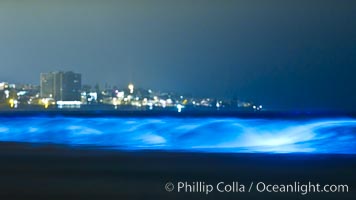
Lingulodinium polyedrum red tide dinoflagellate plankton, glows blue when it is agitated in wave and is visible at night.
Species: Lingulodinium polyedrum
Location: La Jolla, California
Image ID: 27064
Species: Lingulodinium polyedrum
Location: La Jolla, California
Image ID: 27064
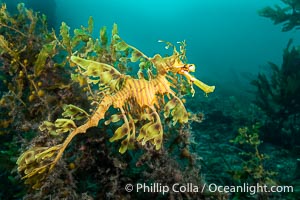
The leafy seadragon (Phycodurus eques) is found on the southern and western coasts of Australia. Its extravagent appendages serve only for camoflage, since it has a nearly-invisible dorsal fin that propels it slowly through the water. The leafy sea dragon is the marine emblem of South Australia.
Species: Leafy seadragon, Phycodurus eques
Location: Rapid Bay Jetty, South Australia
Image ID: 39357
Species: Leafy seadragon, Phycodurus eques
Location: Rapid Bay Jetty, South Australia
Image ID: 39357
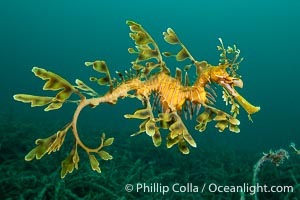
The leafy seadragon (Phycodurus eques) is found on the southern and western coasts of Australia. Its extravagent appendages serve only for camoflage, since it has a nearly-invisible dorsal fin that propels it slowly through the water. The leafy sea dragon is the marine emblem of South Australia.
Species: Leafy seadragon, Phycodurus eques
Location: Rapid Bay Jetty, South Australia
Image ID: 39360
Species: Leafy seadragon, Phycodurus eques
Location: Rapid Bay Jetty, South Australia
Image ID: 39360
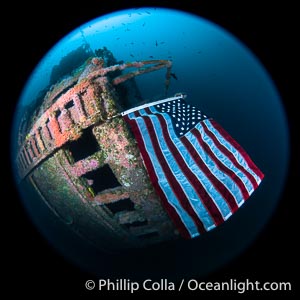
American Flag Flying Over The Wreck of the HMCS Yukon in San Diego. Deliberately sunk in 2000 as part of San Diego's Wreck Alley to form an artifical reef, the HMCS Yukon is a 366-foot-long former Canadian destroyer. It is encrusted with a variety of invertebrate life, including Cornyactis anemones which provide much of the color seen here.
Location: San Diego, California
Image ID: 39477
Location: San Diego, California
Image ID: 39477
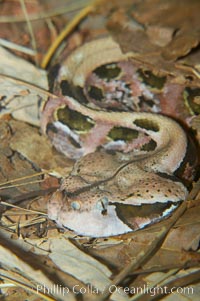
African gaboon viper camouflage blends into the leaves of the forest floor. This heavy-bodied snake is one of the largest vipers, reaching lengths of 4-6 feet (1.5-2m). It is nocturnal, living in rain forests in central Africa. Its fangs are nearly 2 inches (5cm) long.
Species: African gaboon viper, Bitis gabonica
Image ID: 12576
Species: African gaboon viper, Bitis gabonica
Image ID: 12576
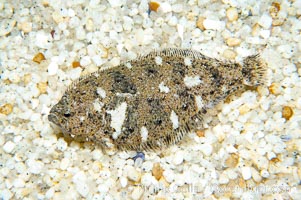
A small (2 inch) sanddab is well-camouflaged amidst the grains of sand that surround it.
Species: Sanddabs, Citharichthys
Image ID: 14936
Species: Sanddabs, Citharichthys
Image ID: 14936
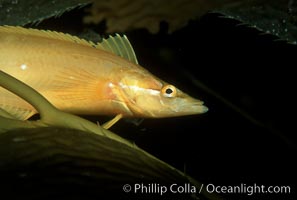
Giant kelpfish amidst kelp.
Species: Giant kelpfish, Heterostichus rostratus, Macrocystis pyrifera
Location: San Clemente Island, California
Image ID: 01291
Species: Giant kelpfish, Heterostichus rostratus, Macrocystis pyrifera
Location: San Clemente Island, California
Image ID: 01291
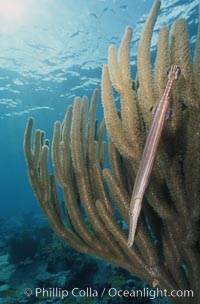
Trumpetfish camouflages itself among the branches of a gorgonian coral (also known as sea rods).
Species: Trumpetfish (atlantic), Aulostomus maculatus, Plexaurella
Location: Bahamas
Image ID: 05210
Species: Trumpetfish (atlantic), Aulostomus maculatus, Plexaurella
Location: Bahamas
Image ID: 05210
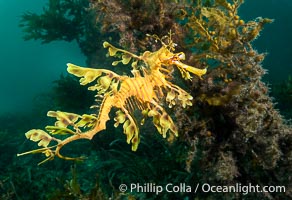
The leafy seadragon (Phycodurus eques) is found on the southern and western coasts of Australia. Its extravagent appendages serve only for camoflage, since it has a nearly-invisible dorsal fin that propels it slowly through the water. The leafy sea dragon is the marine emblem of South Australia.
Species: Leafy seadragon, Phycodurus eques
Location: Rapid Bay Jetty, South Australia
Image ID: 39132
Species: Leafy seadragon, Phycodurus eques
Location: Rapid Bay Jetty, South Australia
Image ID: 39132
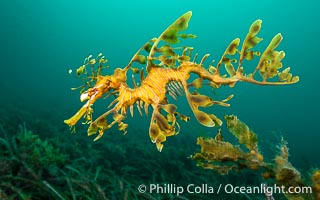
The leafy seadragon (Phycodurus eques) is found on the southern and western coasts of Australia. Its extravagent appendages serve only for camoflage, since it has a nearly-invisible dorsal fin that propels it slowly through the water. The leafy sea dragon is the marine emblem of South Australia.
Species: Leafy seadragon, Phycodurus eques
Location: Rapid Bay Jetty, South Australia
Image ID: 39135
Species: Leafy seadragon, Phycodurus eques
Location: Rapid Bay Jetty, South Australia
Image ID: 39135
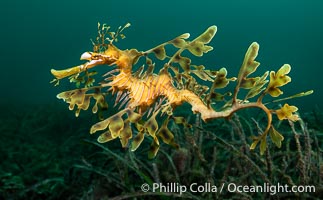
The leafy seadragon (Phycodurus eques) is found on the southern and western coasts of Australia. Its extravagent appendages serve only for camoflage, since it has a nearly-invisible dorsal fin that propels it slowly through the water. The leafy sea dragon is the marine emblem of South Australia.
Species: Leafy seadragon, Phycodurus eques
Location: Rapid Bay Jetty, South Australia
Image ID: 39138
Species: Leafy seadragon, Phycodurus eques
Location: Rapid Bay Jetty, South Australia
Image ID: 39138
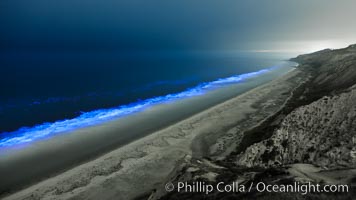
Lingulodinium polyedrum red tide dinoflagellate plankton, glows blue when it is agitated in wave and is visible at night.
Species: Lingulodinium polyedrum
Location: La Jolla, California
Image ID: 27062
Species: Lingulodinium polyedrum
Location: La Jolla, California
Image ID: 27062
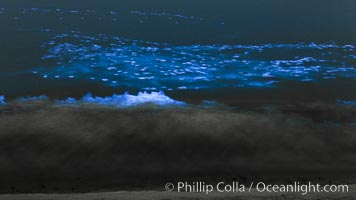
Bottlenose dolphins swim through red tide, hunt a school of fish, lit by glowing bioluminescence caused by microscopic Lingulodinium polyedrum dinoflagellate organisms which glow blue when agitated at night.
Species: Lingulodinium polyedrum
Location: La Jolla, California
Image ID: 27065
Species: Lingulodinium polyedrum
Location: La Jolla, California
Image ID: 27065
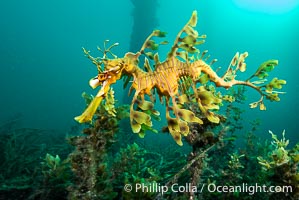
The leafy seadragon (Phycodurus eques) is found on the southern and western coasts of Australia. Its extravagent appendages serve only for camoflage, since it has a nearly-invisible dorsal fin that propels it slowly through the water. The leafy sea dragon is the marine emblem of South Australia.
Species: Leafy seadragon, Phycodurus eques
Location: Rapid Bay Jetty, South Australia
Image ID: 39133
Species: Leafy seadragon, Phycodurus eques
Location: Rapid Bay Jetty, South Australia
Image ID: 39133
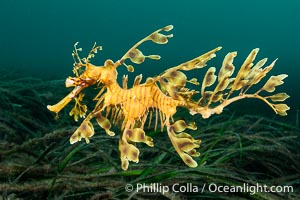
The leafy seadragon (Phycodurus eques) is found on the southern and western coasts of Australia. Its extravagent appendages serve only for camoflage, since it has a nearly-invisible dorsal fin that propels it slowly through the water. The leafy sea dragon is the marine emblem of South Australia.
Species: Leafy seadragon, Phycodurus eques
Location: Rapid Bay Jetty, South Australia
Image ID: 39136
Species: Leafy seadragon, Phycodurus eques
Location: Rapid Bay Jetty, South Australia
Image ID: 39136
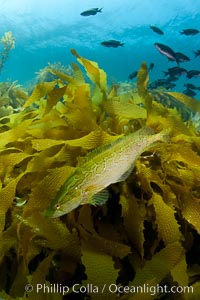
A giant kelpfish swims over Southern sea palms and a kelp-covered reef, mimicing the color and pattern of the kelp leaves perfectly, camoflage.
Species: Giant kelpfish, Southern sea palm, Heterostichus rostratus
Location: San Clemente Island, California
Image ID: 25414
Species: Giant kelpfish, Southern sea palm, Heterostichus rostratus
Location: San Clemente Island, California
Image ID: 25414
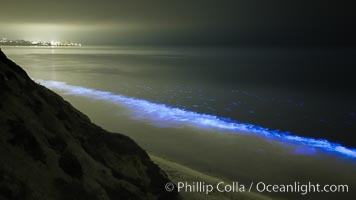
Lingulodinium polyedrum red tide dinoflagellate plankton, glows blue when it is agitated in wave and is visible at night.
Species: Lingulodinium polyedrum
Location: La Jolla, California
Image ID: 27063
Species: Lingulodinium polyedrum
Location: La Jolla, California
Image ID: 27063
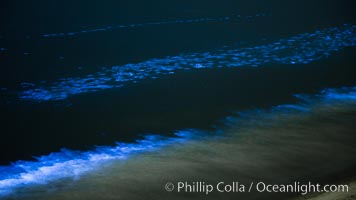
Bottlenose dolphins swim through red tide, hunt a school of fish, lit by glowing bioluminescence caused by microscopic Lingulodinium polyedrum dinoflagellate organisms which glow blue when agitated at night.
Species: Lingulodinium polyedrum
Location: La Jolla, California
Image ID: 27067
Species: Lingulodinium polyedrum
Location: La Jolla, California
Image ID: 27067
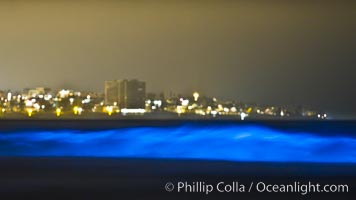
Lingulodinium polyedrum red tide dinoflagellate plankton, glows blue when it is agitated in wave and is visible at night.
Species: Lingulodinium polyedrum
Location: La Jolla, California
Image ID: 27068
Species: Lingulodinium polyedrum
Location: La Jolla, California
Image ID: 27068
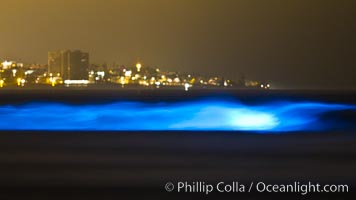
Lingulodinium polyedrum red tide dinoflagellate plankton, glows blue when it is agitated in wave and is visible at night.
Species: Lingulodinium polyedrum
Location: La Jolla, California
Image ID: 27069
Species: Lingulodinium polyedrum
Location: La Jolla, California
Image ID: 27069
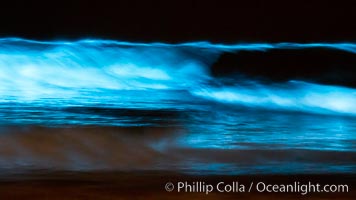
Lingulodinium polyedrum red tide dinoflagellate plankton, glows blue when it is agitated in wave and is visible at night.
Species: Lingulodinium polyedrum
Location: La Jolla, California
Image ID: 27070
Species: Lingulodinium polyedrum
Location: La Jolla, California
Image ID: 27070
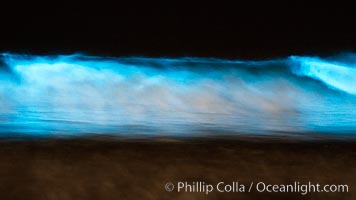
Lingulodinium polyedrum red tide dinoflagellate plankton, glows blue when it is agitated in wave and is visible at night.
Species: Lingulodinium polyedrum
Location: La Jolla, California
Image ID: 27071
Species: Lingulodinium polyedrum
Location: La Jolla, California
Image ID: 27071
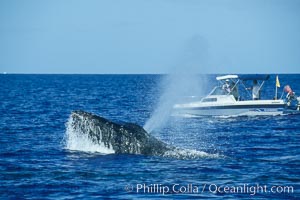
Humpback whale, male head lunging, whale research boat (Center for Whale Studies) in background flying yellow NOAA/NMFS permit flag.
Species: Humpback whale, Megaptera novaeangliae
Location: Maui, Hawaii
Image ID: 04368
Species: Humpback whale, Megaptera novaeangliae
Location: Maui, Hawaii
Image ID: 04368
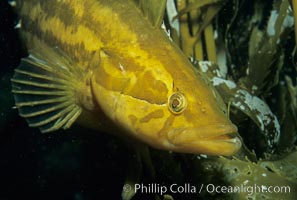
Giant kelpfish in kelp.
Species: Giant kelpfish, Heterostichus rostratus, Macrocystis pyrifera
Location: San Clemente Island, California
Image ID: 05142
Species: Giant kelpfish, Heterostichus rostratus, Macrocystis pyrifera
Location: San Clemente Island, California
Image ID: 05142